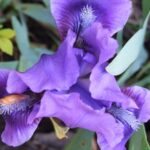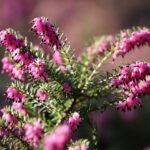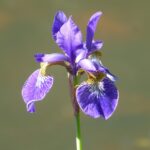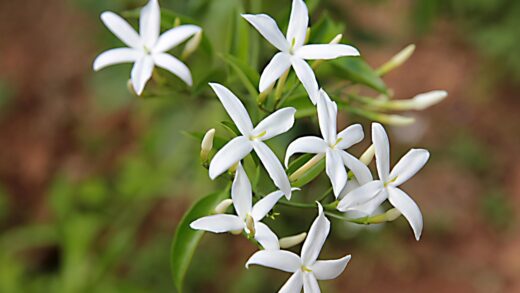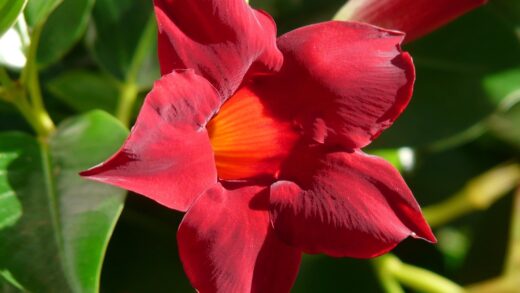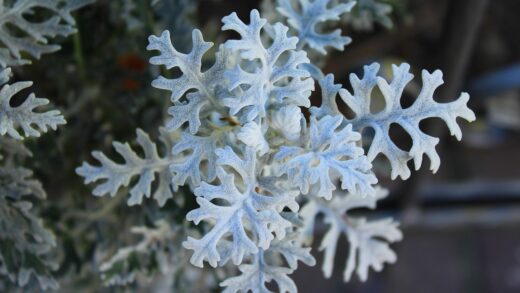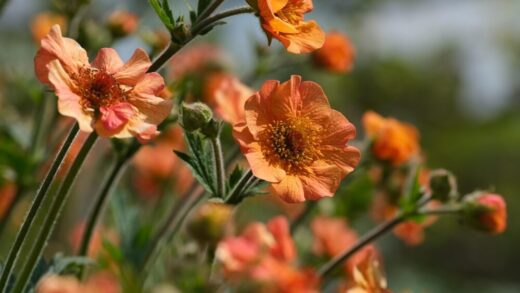One of the most valuable characteristics of Geranium x cantabrigiense is its remarkable adaptability to a wide range of light conditions, making it an incredibly versatile plant for solving various design challenges in the garden. It is one of those rare perennials that performs admirably in locations spanning from full, direct sun to considerable partial shade. This flexibility allows it to be used in many different areas of the landscape, from bright, open borders to the dappled light found under the canopy of deciduous trees. Understanding how the plant responds to different levels of light will help you to site it for optimal performance and to achieve your desired aesthetic effect. While it is highly adaptable, the amount of light the plant receives does have a noticeable impact on its growth habit and flowering. In general, when planted in a location that receives at least four to six hours of direct sunlight per day, Geranium x cantabrigiense will exhibit its best form. More sun typically translates to more compact and dense growth, as well as a more prolific display of its charming pink or white flowers. The foliage tends to be a brighter green, and the overall plant has a tighter, more mounded appearance. This makes a sunnier spot the ideal choice if your primary goal is to maximize the floral show.
Conversely, when planted in shadier conditions, the plant will adapt its growth accordingly. With less light energy available, it tends to grow a bit more openly and can develop a slightly more sprawling or “leggy” habit as it reaches for the available light. While the foliage will still form a beautiful and effective ground cover, it may not be quite as dense as it would be in the sun. The flowering may also be somewhat reduced in deeper shade, with fewer blooms produced overall. However, the plant will still flower reliably, and the foliage often develops a deeper, richer green colour in the shade, which can be very attractive.
The ideal location for many gardeners, particularly those in warmer climates, is often a spot that offers a compromise between these two extremes. A position that receives morning sun and then dappled or partial shade during the hottest part of the afternoon is often considered perfect. This provides enough light to encourage abundant flowering and compact growth, while the afternoon shade protects the foliage from the potential stress of intense summer sun, preventing any risk of leaf scorch. This makes it an excellent candidate for east-facing garden beds or for planting on the sunnier edges of a woodland garden.
Ultimately, the “best” light condition for Geranium x cantabrigiense depends on your specific garden environment and your goals. If you have a difficult shady spot where little else will grow, this geranium will likely thrive and provide a lush carpet of green. If you have a sunny border and want a low-growing plant to produce a mass of flowers, it will happily oblige. Its ability to tolerate such a broad spectrum of light is a testament to its genetic makeup and is a primary reason why it has become such an enduring and popular choice for gardeners seeking reliable and beautiful ground cover.
Thriving in full sun
Geranium x cantabrigiense is fully capable of thriving in a full sun location, provided its basic needs for moisture are met, especially during its establishment period. In this context, “full sun” is generally defined as receiving six or more hours of direct, unfiltered sunlight per day. When grown in these bright conditions, the plant’s growth is typically at its most vigorous and dense. The internodes, which are the spaces on the stem between the leaves, remain short, resulting in a very compact, tight mat of foliage that is highly effective at suppressing weeds.
More articles on this topic
The most noticeable benefit of a full sun position is the impact on flowering. Sunlight provides the energy that plants use for photosynthesis, and more energy often translates into a more abundant production of flowers. A Cambridge cranesbill grown in full sun will typically be covered in a profusion of its characteristic magenta or white blossoms during its late spring to early summer blooming season. The floral display will be richer and more dramatic than that of a plant grown in the shade, making it an excellent choice for the front of a sunny perennial border or a rock garden.
While it tolerates full sun, it is important to consider your climate. In cooler northern regions, a full sun location is almost always ideal. However, in hotter, more southern climates, the intensity of the afternoon sun can sometimes be stressful for the plant. In these areas, the foliage might show signs of minor stress on the hottest days, though the plant is generally tough enough to handle it. Providing consistent moisture, especially during heatwaves, will help the plant to cope with these conditions. A layer of mulch around the plant can also be beneficial in keeping the roots cool and conserving soil moisture.
It is also worth noting that the attractive autumn and winter foliage colour is often more pronounced on plants that receive more sun. The exposure to direct sunlight and cooler temperatures can trigger the production of anthocyanin pigments, which are responsible for the red, bronze, and orange tints that the semi-evergreen leaves develop. So, for the best all-around seasonal display, from the profusion of summer flowers to the richness of the autumn foliage, a location with plenty of sun is often the preferred choice, as long as the soil does not become excessively dry.
Performance in partial shade
The ability of Geranium x cantabrigiense to perform beautifully in partial shade is one of its most useful traits for garden design. Partial shade can be defined in a few ways, but it generally refers to areas that receive between two and four hours of direct sun per day, or areas that are in dappled light for most of the day, such as beneath high-canopied trees. This geranium is a perfect solution for these often tricky spots in the garden where full-sun perennials would fail to thrive. It can brighten up the understory of shrubs and trees with both its foliage and its flowers.
More articles on this topic
In partial shade, the plant’s growth habit will be noticeably different than in full sun. It tends to be a bit more open and spreading, with slightly longer stems between the leaves. This results in a softer, more relaxed appearance that can be very well-suited to informal or woodland garden styles. While the foliage mat may be less dense, it is still highly effective as a ground cover. The leaves themselves often appear a deeper and more lustrous shade of green when shielded from the intensity of direct sun, providing a rich, verdant texture.
Flowering in partial shade is still very reliable, though it may be somewhat less profuse than on a plant grown in full sun. The plant will still produce a beautiful display of flowers, but they might be fewer in number and the blooming period might be slightly less intense. However, for many gardeners, this is a more than acceptable trade-off for having a plant that flowers at all in a shaded location. The blossoms can also appear more luminous and stand out more distinctly against the darker foliage in a lower-light setting.
Partial shade offers a protected environment that can be beneficial in several ways. The soil in shaded areas tends to retain moisture for longer, reducing the need for supplemental watering. The foliage is also protected from the risk of scorching, which can be an issue in very hot climates. This makes Geranium x cantabrigiense an ideal companion plant for other shade-loving perennials like Hostas, Ferns, and Brunnera, where it can be used to fill in gaps and create a cohesive, multi-layered planting design that thrives in lower light conditions.
Deep shade tolerance
While Geranium x cantabrigiense performs best with at least some direct sun, it is remarkably tolerant of quite shady conditions. It can survive and even form a decent ground cover in what many would consider deep or full shade, meaning areas that receive less than two hours of direct sunlight per day. This makes it a valuable plant for some of the most challenging areas in a garden, such as the north side of a building or under dense evergreen trees. Its ability to persist in these low-light areas where many other plants would languish is a significant asset.
It is important to have realistic expectations for its performance in deep shade. In these conditions, the plant’s growth will be at its most open and spreading. It will still form a ground cover, but it will be a much looser and less dense mat of foliage. The primary value of the plant in deep shade is its ability to provide a carpet of attractive, textured green leaves that will cover the bare ground and require very little maintenance. This is often preferable to bare soil or a constant battle with shade-tolerant weeds.
Flowering will be significantly reduced in deep shade. The plant may produce only a few sporadic flowers, or in very dark conditions, it may not flower at all. Therefore, if you are planting it in a heavily shaded spot, you should do so primarily for the value of its foliage as a ground cover, rather than for its floral display. The fragrant, semi-evergreen leaves still provide year-round interest and texture, which can be very valuable in a shade garden composition.
For the plant to succeed in deep shade, the soil conditions become even more important. Often, shady areas, such as those under large trees, can have very dry soil due to the tree’s roots absorbing most of the available moisture. This is known as dry shade, and it is a notoriously difficult environment. While this geranium is drought-tolerant once established, it will need regular watering during its first season to establish a root system in these competitive conditions. Amending the soil with plenty of compost before planting can also help it to retain the moisture it needs to get started.










